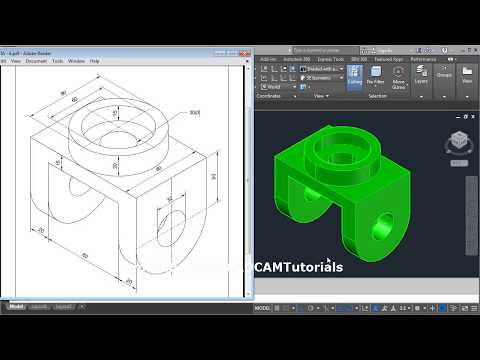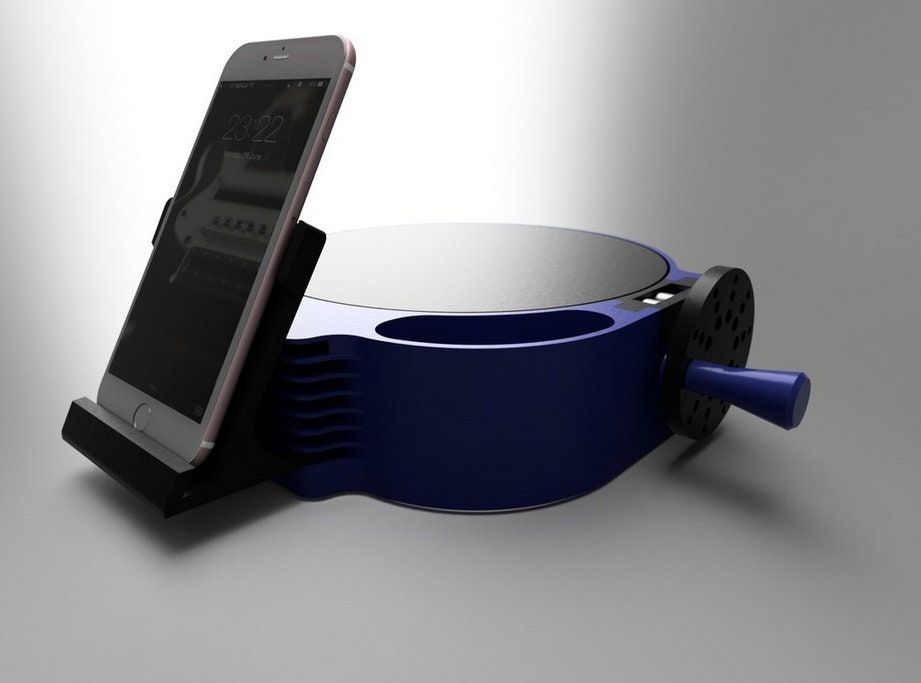Who makes 3d printing material
TOP 10 COMPANIES IN 3D PRINTING MATERIALS MARKET
3D printing technology has been evolving faster than other manufacturing technologies as it can influence manufacturing processes and help businesses perform to a higher level. Further, 3D printing manufacturing line is easier to alter than the production line for traditional manufacturing. This makes it preferable for the bulk equipment manufacturing processes. Due to this advantage, industries such as aerospace, construction, and automotive have started adopting this technology aggressively. On the other hand, healthcare and electronics manufacturers are some of the earliest adopters of 3D printing, owing to its advantages such as faster time-to-market, design flexibility, and capabilities of manufacturing customized products. Thus, in the last few years, huge market demand for 3D printing materials were observed in healthcare.
3D Printing Materials Market is expected to reach a value of $9.86 billion by 2028, at a CAGR of 26. 7% during the forecast period 2021-2028..
Here are the top 10 companies operating in 3D PRINTING MATERIALS MARKET –
Stratasys, Ltd.
Founded in 1989 and headquartered at Rehovot, Israel, Stratasys, Ltd. is a global leader in additive manufacturing or 3D printing technology and is the manufacturer of FDM and PolyJet3D Printers. The company operates through three major divisions, namely prototypes, manufacturing tools, and production parts for industries, including aerospace, automotive, healthcare, consumer products, and education, among others.
Stratasys systems are used by engineers to model complex geometries in a wide-ranging of thermoplastic materials comprising of Acrylonitrile Butadiene Styrene (ABS), Polyphenylsulfone (PPSF), Polycarbonate (PC), and ULTEM 9085 and Nylon 12. It offers products and services and operates in the 3D printing materials market through its polymers and metals product segment.
Some of the major subsidiaries of the company are MakerBot (New York), GrabCAD (U.S), Stratasys GmBh (U.S), Solid concepts (U.S), Objet Geometries (Israel), etc. The company has its geographic presence in Brazil, China, Germany, Hong Kong, Israel, Japan, Korea, India, Mexico, the U.K. and the U.S.
The Hewlett Packard Company
Founded in 1939 and headquartered at California, the U.S., HP Inc. is a leading global provider of personal computing and other access devices, imaging and printing products, and related technologies, solutions, and services. HP sells its products to individual consumers, small- and medium-sized businesses (SMBs), and large enterprises, including customers in the government, health and education, and other sectors. HP specialized in developing and manufacturing computing, data storage, and networking hardware; designing software; and delivering services.
The major product range include personal computing devices, enterprise and industry standard servers, related storage devices, networking products, software, and a diverse range of printers and other imaging products. HP also has services and consulting business around its products and partner products. 3D printing delivers the HP multi-jet fusion 3D printing solution designed for prototyping and production of functional parts and functions on an open platform facilitating the development of new 3D printing materials. The company operates in the 3D printing materials market through its printing segment.
HP also has services and consulting business around its products and partner products. 3D printing delivers the HP multi-jet fusion 3D printing solution designed for prototyping and production of functional parts and functions on an open platform facilitating the development of new 3D printing materials. The company operates in the 3D printing materials market through its printing segment.
The company has its geographic presence primarily in Americas, Europe, Middle East and Africa, and Asia-Pacific regions. Some of the major subsidiaries of the company are VoodooPC (Canada), Apogee corporation (U.K.), PrinterOn Corporation (Canada), Hewlett-Packard India Sales Private Limited (India), Indigo America, Inc. (U.S.), and Avantek Inc. (U.S.), among others.
EOS GmbH
Headquartered at Germany, EOS GmbH is a global technology leader for industrial 3D printing of metals and polymers. EOS is known for being an inventor and innovator for complete solutions in additive manufacturing. EOS is grasping the interaction of laser and powder material. Moreover, EOS offers all the necessary elements for industrial 3D printing.
EOS is grasping the interaction of laser and powder material. Moreover, EOS offers all the necessary elements for industrial 3D printing.
The company has its geographic presence in Africa, Asia, America, Europe, and Russia. Some of the major subsidiaries of the company are Advanced Laser Materials LLC (U.S.), Kvg Kunststoff-Vertriebs Kg (Germany), and others.
3D Systems, Inc.
Founded in 1986 and headquartered at South Carolina, the U.S., 3D Systems, Inc. is a leading additive manufacturing solutions company. It empowers manufacturers to create products and business models. This is succeeded with the company’s finest digital manufacturing ecosystem consist of plastic and metal 3D printers, print materials, on demand manufacturing services, and a portfolio of end-to-end manufacturing software.
The company operates in advanced applications for prototyping through production in markets such as aerospace, automotive, medical, dental, and consumer goods.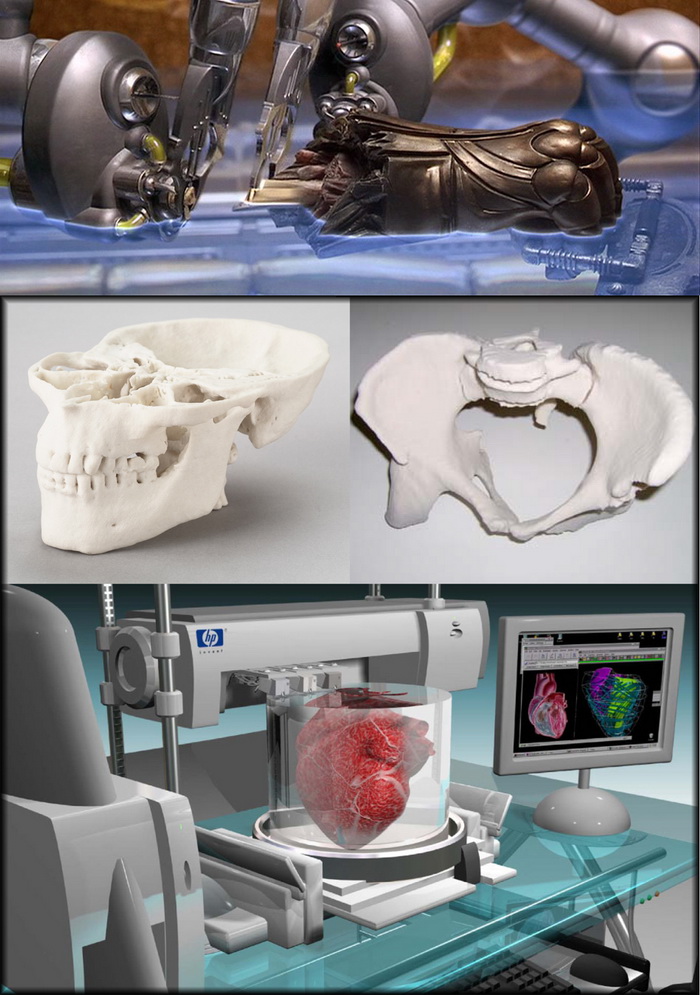 The company operates in 3D printing materials market through its material business segment.
The company operates in 3D printing materials market through its material business segment.
The company has its geographic presence in the Americas, EMEA, and APAC regions. Some of the major subsidiaries of the company are Simbionix Ltd. (Israel), Geomagic (U.S), and Cimatron Group (Israel), among others.
The ExOne Company
Founded in 2005 and headquartered at Pennsylvania, the U.S., The ExOne Company is a global provider of 3D printing machines, materials, and services to industrial customers. ExOne’s business mainly comprises of manufacturing and selling of 3D printing machines and printing products according to customer requirement. ExOne can 3D print metal, sand, ceramics, and composites, as well as other powder particles.
From aerospace and automotive to energy and defense, companies in wide range of industries use ExOne 3D printers. The company operates in the 3D printing materials market through its 3D printed material business segment.
The company has its geographic presence in North America, Europe, and Asia regions. Some of the major subsidiaries of the company are ExOne Americas LLC (US), ExOne GmbH (Germany), ExOne KK (Japan), Troy Metal Fabricating LLC (US), ExOne Italy Srl (Italy).
Meticulous Research in its latest publication on global 3D Printing Materials Market has predicted the growth of 26.7% during the forecast year 2021-2028
Proto Labs, Inc.
Founded in 1999 and headquartered at Minnesota, the U.S., Proto Labs, Inc. engaged in rapid manufacturing of low-volume 3D printed, CNC-machined, sheet metal, and injection-molded custom parts for prototyping, short-run, and on-demand production. The technology supports company to produce custom parts and assemblies in 1 day with automated 3D printing processes. Their digital method for manufacturing allows accelerated time to market, decreases development and production costs, and reduces risk throughout the product life cycle.
The company offers its products to industries like electronics, appliances, medical devices, automotive, and consumer products. The company operates in 3D printing materials market through its 3D printing business segment.
With its subsidiaries and a strong network of distribution, the company operates in the North America, Europe, and Asia-Pacific. Some of the major subsidiaries of the company are Rapid Manufacturing Group LLC (U.S), Rapid Sheet Metal LLC (U.S), N.H. Rapid Machining, LLC (U.S), and others.
Materialise NV
Founded in 1990 and headquartered at Leuven, Belgium, Materialise N.V. is active in the field of additive manufacturing. The company provides 3D imaging software solutions to develop products for industrial, medical, and dental industries. The company offers design software and prototype solutions to various industries around the world.
The company has a large installed base of various additive technologies that can process a wide range of materials, both polymer and metal. In-house processes include: Stereolithography, Selective Laser Sintering, Fused Deposition Modelling, PolyJet, Multi-Jet Fusion (MJF), and Direct Metal Laser Sintering.
In-house processes include: Stereolithography, Selective Laser Sintering, Fused Deposition Modelling, PolyJet, Multi-Jet Fusion (MJF), and Direct Metal Laser Sintering.
The company has its geographic presence in the Americas, Europe & Africa, and Asia-Pacific regions. Some of the major subsidiaries of the company are Meridian Technique Limited (U.K.), RapidFit+ (Belgium), Meridian Technique Limited (U.K.), and ACTech, Inc. (Taiwan), among others.
Evonik Industries AG
Founded in 2007 and headquartered at Essen, Germany, Evonik Industries AG is a leading specialty chemicals provider, owned by RAG Foundation. Evonik Industries combined the business areas of chemicals, energy, and real estate of RAG, while mining operations continue to be carried out by RAG. Its specialty chemicals business segment generates around 80% of sales in areas in which it holds leading market positions.
Evonik is the main sponsor of German football club Borussia Dortmund.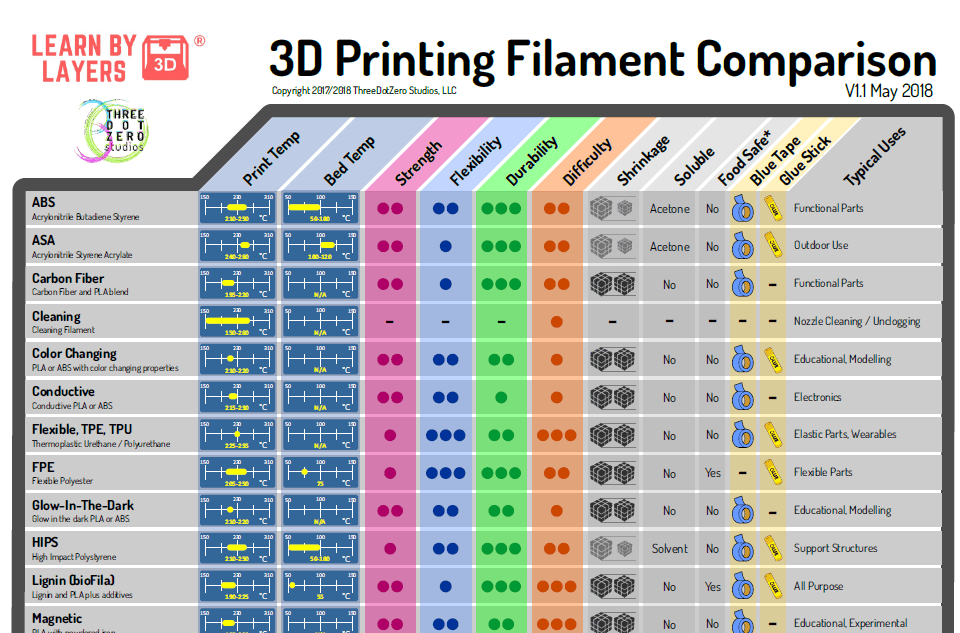 The company operates in the 3D printing materials market through its performance materials business segment.
The company operates in the 3D printing materials market through its performance materials business segment.
The company has its geographic presence primarily in Middle East & Africa, Asia-Pacific, America, and Europe. Some of the major subsidiaries of the company are Evonik Degussa (Germany), Evonik-Cyro (US), Evonik Tego Chemie GmbH (Germany), Porphyrio NV (Belgium), and Evonik Nutrition & Care GmbH (Germany), among others.
Arkema S.A.
Founded in 2004 and headquartered at Colombes, France, Arkema S.A is a global manufacturer of specialty chemicals and advanced materials. It operates via three business segments, namely High Performance Materials, Industrial Specialties, and Coating Solutions. Arkema offers innovative solutions in photocure resins and high performance thermoplastic polymers for the 3D printing market.
The company operates in the 3D printing materials market through advance material segment.
Arkema operates in close to 55 countries including China, Japan, U. S, and Canada, among others. Some of the major subsidiaries of the company are Bostik (US), ArrMaz Custom Chemicals, Inc. (Florida), CECA (France), and Altuglas International (France), among others.
S, and Canada, among others. Some of the major subsidiaries of the company are Bostik (US), ArrMaz Custom Chemicals, Inc. (Florida), CECA (France), and Altuglas International (France), among others.
Zortrax
Founded in 2013 and headquartered at Olsztyn, Poland, Zortrax is a Polish developer of a wide-range of 3D printing solutions , including 3D printers, filaments, Z-SUITE software, and other devices. Zortrax offer its products to thousands of customers around the world in a wide range of industries, such as architecture, medicine, automotive, engineering, industrial prototyping, or fashion.
Zortrax offers its products through a network of over 130 partners operating in 90 countries around the world on six continents, including the largest markets in Europe, the Americas, Asia, Africa, and Australia.
Popular Mentions: EnvisionTEC Inc., (U.S), Markforged Inc., (U.S), Sculpteo- a BASF Company (France), and Tethon 3D (U.S)
Key questions answered in the report-
- Which are the high growth market segments in terms of type, form, application, and countries?
- What is the historical market for 3D printing materials across the globe?
- What are the market forecasts and estimates from the period 2019-2025?
- What are the major drivers, restraints, and opportunities in the overall 3D printing materials market?
- Who are the major players in the overall 3D printing materials market and what share of the market do they hold?
- Which are the major players in various countries and what share of the market do they hold?
- How is the competitive landscape?
- What are the recent developments in the overall 3D printing materials market?
- What are the different strategies adopted by the major players in the overall 3D printing materials market?
- What are the geographic trends and high growth countries?
- Who are the local emerging players in the overall 3D printing materials market and how do they compete with the other players?
Please download report pages and learn more : https://www. meticulousresearch.com/download-sample-report/cp_id=5083
meticulousresearch.com/download-sample-report/cp_id=5083
Top Manufacturers and Suppliers of 3D Printers in the US and Canada
A 3D printer uses CAD to create 3D objects from a variety of materials,like molten plastic or powders
Image credit: Shutterstock/Aumm graphixphoto
3D printers also called additive manufacturing printers or fabrication printers are a type of material design printer that designs and builds 3D models and products of devices and components using an additive manufacturing process.
3D printers design three-dimensional prototypes and create the end product by directly building them using computer-aided design (CAD) or software-created 3D design diagrams, figures, and patterns.
3D printers utilize additive manufacturing, where the printer designs the object by applying sequential layers of raw material to print a three-dimensional object.
In this article, we'll cover details on the top featured manufacturers and suppliers of 3D printers on Thomas, as well as the top 3D printer suppliers in the US and Canada by revenue.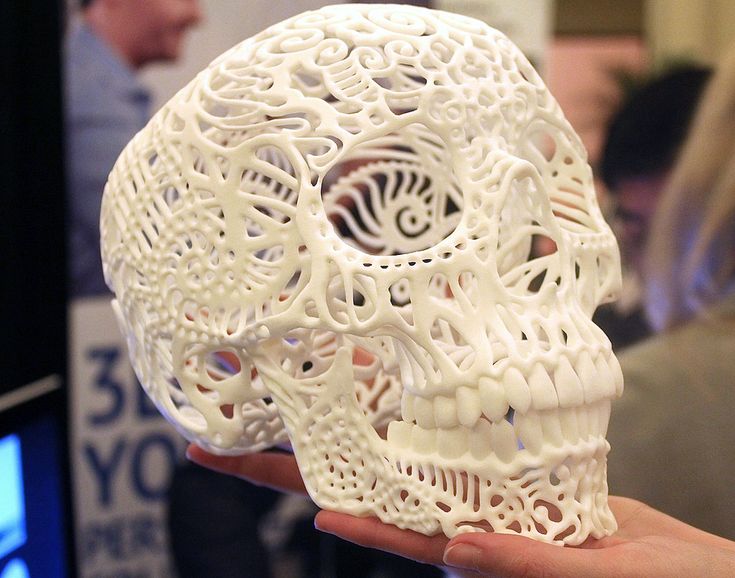
Top Featured 3D Printer Manufacturers and Suppliers on Thomas
Table 1 below lists the top featured manufacturers and suppliers of 3D printers on Thomasnet.com. Included in the information, you'll find details on each company's location, year founded, number of employees, and brief summary of activities. Dashes indicate where data was unavailable.
Table 1: Top Featured 3D Printer Manufacturers and Suppliers on Thomas| Company | Location | Year Founded | No. of Employees |
| Applied Rapid Technologies | Fredericksburg, VA | 1996 | 10-49 |
| AON3D | Montreal, QC | 2015 | 10-49 |
| Sciaky, Inc. | Chicago, IL | 1939 | 50-99 |
Raise 3D Technologies, Inc.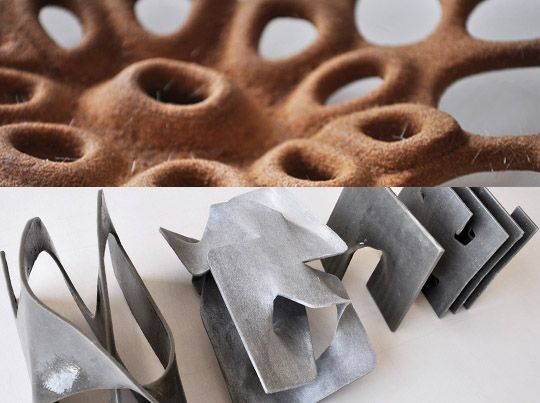 | Irvine, CA | 2018 | 10-49 |
| Seika Machinery, Inc. | Hayward, CA | 1996 | 10-49 |
| Terrafilum | Cary, IL | 2017 | 1-9 |
| Ellsworth Adhesives | Germantown, WI | 1974 | 1000+ |
| Vector Technology Systems | Phoenix, AZ | 1988 | 1-9 |
| 3D In Metal | Spring, TX | - | - |
| LulzBot (Fargo Additive Manufacturing Equipment 3D, LLC) | Fargo, ND | 2011 | 50-99 |
Applied Rapid Technologies is a custom manufacturer and distributor that supplies 3D printers that feature rotate and push operations, sleek industrial designs, open material platforms, dual wavelengths, and diverse materials.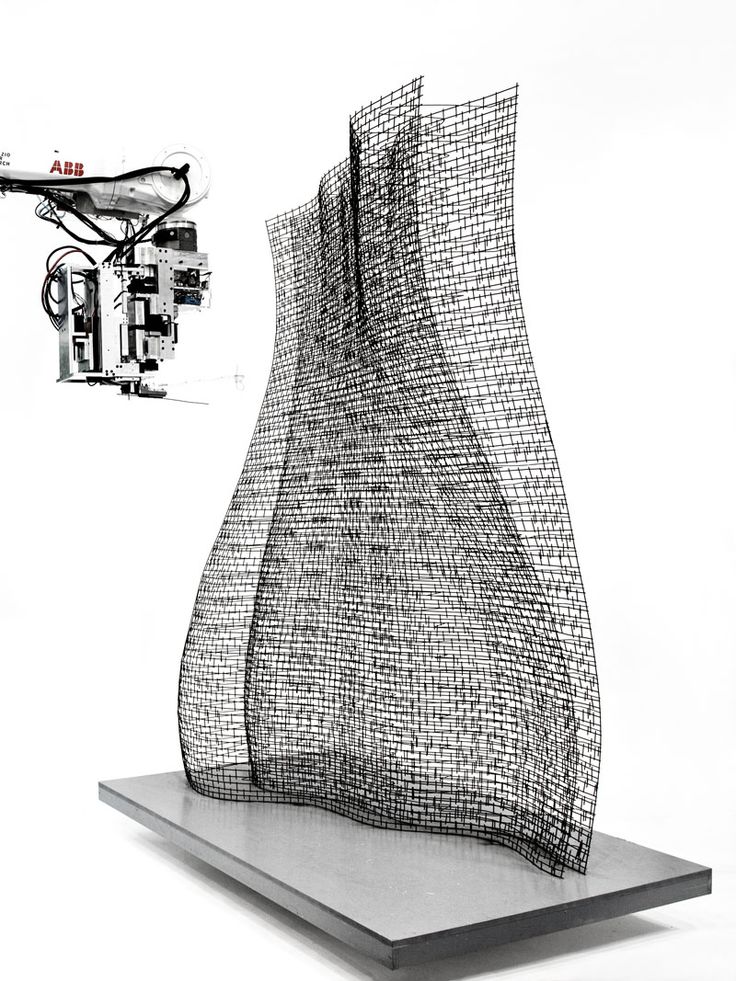 The company is headquartered in Fredericksburg, VA, and has been in business since 1996.
The company is headquartered in Fredericksburg, VA, and has been in business since 1996.
Located in Montreal, QC, AON3D is an industry-leading manufacturer of high-temperature 3D printers. The company's printers prints with polyetheretherketone (PEEK), polyvinylidene fluoride (PVDF), polyphenylene sulfide (PPS), acrylonitrile butadiene styrene (ABS), thermoplastic elastomer (TPE), thermoplastic polyurethanes (TPU), polyphthalamide (PPA), polypropylene (PP), polyvinyl chloride (PVC), polycarbonate and nylon materials.
Established in 1939, Sciaky, Inc. specializes in electron beam 3D printers for nuclear, medical, semiconductor, marine, aircraft, power generation, and oil & gas sectors. The company uses materials such as titanium, tantalum, tungsten, niobium, aluminum, steel, and Inconel® for printing.
Raise 3D Technologies, Inc. is a leading manufacturer of industrial-grade 3D printers. The company's 3D printers offer HEPA filters and WiFi, LAN, USB port, and live camera connectivity.
The company's 3D printers offer HEPA filters and WiFi, LAN, USB port, and live camera connectivity.
Seika Machinery, Inc. is a distributor that specializes in the supply of automated machinery including nozzle cleaners, PCB routers, stencil cleaners, selective soldering, conformal coating, flying probe testers, and recycling systems. The company is headquartered in Hayward, CA, and has been in business since 1996.
Headquartered in Cary, IL, Terrafilum manufactures 3D printers since 2017. The company meets the demands of the commercial and educational sectors.
Ellsworth Adhesives is a distributor that provides continuous, thermal, and 3D printers that are ideal for molds, manufacturing tools, spare parts, aerospace parts, and medical devices. The company has its headquarters located in Germantown, WI, and has been in business since 1974.
Vector Technology Systems is a custom manufacturer and distributor that provides a wide range of equipment and products including selective laser sintering, stereolithography, binder jetting, digital light processing, and full-color additive manufacturing systems. The company is headquartered in Phoenix, AZ, and has been in business since 1988.
The company is headquartered in Phoenix, AZ, and has been in business since 1988.
3D In Metal is a custom manufacturing company that provides 3D printing machines and related services such as cold spray, additive friction stir, and wire arc. It also offers fabrication, post-processing, and assembly services. The company has its headquarters located in Spring, TX.
LulzBot (Fargo Additive Manufacturing Equipment 3D, LLC) is a manufacturing company that provides desktop 3D printers that are capable of producing large functional prototypes, as well as aids, and print-on-demand parts. The company has its headquarters located in Fargo, ND, and has been in business since 2011.
Top 3D Printer Manufacturers and Suppliers on Thomas by Revenue
Table 2 below lists the top manufacturers and suppliers of 3D printers in the USA and Canada, ranked by estimated annual revenue as found on Thomasnet.com. Besides the revenues, you'll find details on each company's location, year founded, and brief summary of activities.
Besides the revenues, you'll find details on each company's location, year founded, and brief summary of activities.
| Company | Location | Year Founded | Annual Revenue |
| Allied Electronics, Inc. | Fort Worth, TX | 1928 | $250 Mil. and over |
| HP Inc. | Palo Alto, CA | 1938 | $250 Mil. and over |
| BigRep America Inc. | Wilmington, MA | 2014 | $250 Mil. and over |
| Autodesk Inc. | San Rafael, CA | 1982 | $250 Mil. and over |
| Sciaky, Inc. | Chicago, IL | 1939 | $100 - 249.9 Mil |
| Ellsworth Adhesives | Germantown, WI | 1974 | $100 - 249. 9 Mil 9 Mil |
| Dasenic Electronic Limited | Calgary, AB | 2013 | $100 - 249.9 Mil |
| Paradigm Manufacturing | Phoenix, AZ | 2018 | $100 - 249.9 Mil |
| Electroimpact, Inc. | Mukilteo, WA | 1986 | $50 - 99.9 Mil |
| MakerBot Industries, LLC | Brooklyn, NY | 2009 | $50 - 99.9 Mil |
Allied Electronics, Inc. is a distributor that provides electronic, electromechanical, and industrial automation equipment such as video, audio, RF, and security equipment, automation and control devices, and circuit protection devices. The company has its headquarters located in Fort Worth, TX, and has been in business since 1928.
With over 80 years of experience, HP Inc. is a manufacturer of 3D printers. The company meets the demands of consumer goods or electronics, orthotics, prosthetics, health care, medical, higher education, transportation, automotive, and aerospace industries.
BigRep America Inc. is a custom manufacturing company that supplies 3D printing services primarily to the aerospace, automotive, and construction industries. It also offers powder coating, sanding, consulting, and painting services. The company is headquartered in Wilmington, MA, and has been in business since 2014.
Autodesk Inc. is a world-renowned manufacturer of CAD/CAM, 3D and 2D design, modeling, 3D printing, animation, simulation, and structural engineering software. The company has its US headquarters located in San Rafael, CA, and has been in business since 1982.
Established in 1939, Sciaky, Inc. specializes in electron beam 3D printers for nuclear, medical, semiconductor, marine, aircraft, power generation, and oil & gas sectors. The company uses materials such as titanium, tantalum, tungsten, niobium, aluminum, steel, and Inconel® for printing.
The company uses materials such as titanium, tantalum, tungsten, niobium, aluminum, steel, and Inconel® for printing.
Ellsworth Adhesives is a distributor that provides continuous, thermal, and 3D printers that are ideal for molds, manufacturing tools, spare parts, aerospace parts, and medical devices. The company has its headquarters located in Germantown, WI, and has been in business since 1974.
Dasenic Electronic Limited is a distributor that specializes in the supply of PCB and scanner 3D printers. The company has its headquarters located in Calgary, AB, and has been operating since its founding in 2013.
Paradigm Manufacturing is a custom manufacturing company that provides rapid prototype printing, 3D printing, consultation, production design, and engineering services. The company has its headquarters located in Phoenix, AZ, and serves the automotive, aerospace, consumer products, defense, and healthcare industries.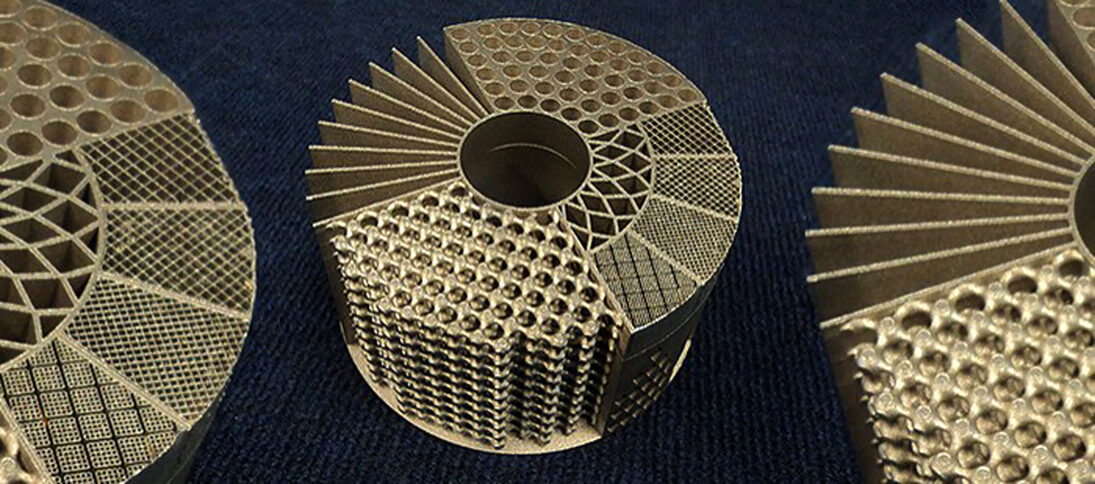 It was established in 2018.
It was established in 2018.
Electroimpact, Inc. is a manufacturing company that supplies the aerospace industry with 3D printers that are capable of creating complex shapes and designs. The company has its headquarters located in Mukilteo, WA, and has been operating since its founding in 1986.
MakerBot Industries, LLC manufactures 3D printers that print with polymers, composites, and metal materials. Aerospace, automotive, education, and manufacturing are some of the industries served by the company.
Top 3D Printer Manufacturers and Suppliers in the US and Canada—Summary
With the help of the provided details on the top featured manufacturers and suppliers of 3D printers on Thomas, as well as the top 3D printer suppliers in the US and Canada by revenue, we hope you can use this data to further aid your sourcing decisions.
You can also look at our Supplier Discovery page, which has information on more than 150 suppliers of 3D printers.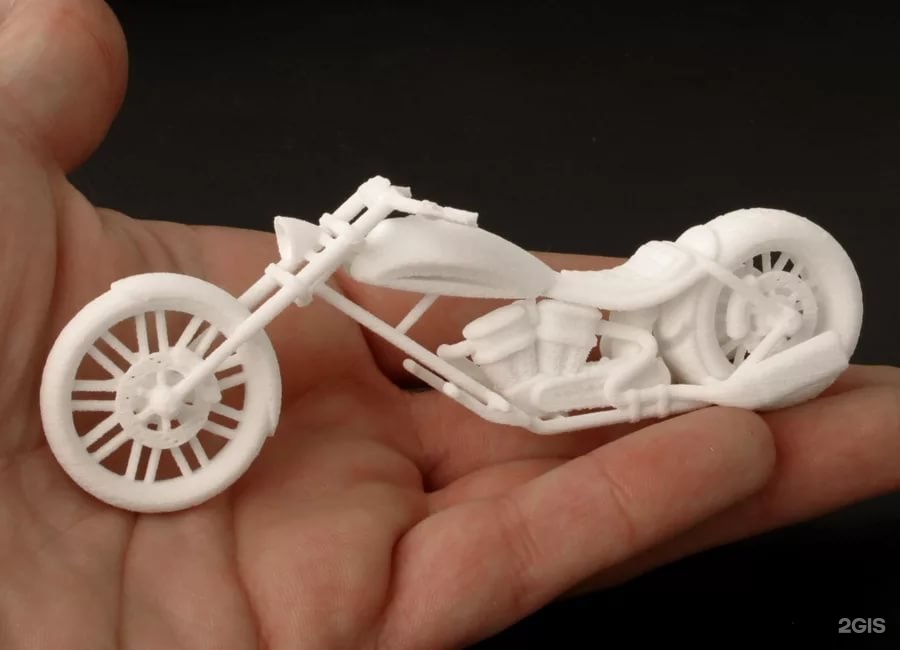
Trademark Notice
Sources
-
3D Printers
Other 3D Printing Articles
- Types of 3D Printing Technologies
- Top 3D Printing Services Companies in the USA
- Origins of 3D Printing and Additive Manufacturing
- Top 3D Printing Manufacturers and Suppliers (Publicly Traded and Privately-Owned)
- Top Suppliers of Additive Manufacturing Consulting Services
- The Best 3D Printers under $300
- The Best 3D Printers under $200
- The Best 3D Printing Software
- The Best 3D Printer Under $1000
- The Best 3D Printer Under $500
- All About Material Jetting
- All About Multi-Jet Modeling (MJM) 3D Printing
Other Top Suppliers Articles
- Top RFID Antenna Manufacturers USA and Internationally
- Top Thermocouple Manufacturers in the USA - By Revenue, Location and Product Type
- Top Suppliers of Integrated Circuit Design Services in the USA and Globally
- Top Industrial Automation Software Companies in the USA and Globally
- Top Cloud Services Providers and the USA and around the Globe
- Top Battery Enclosure Manufacturers and Suppliers in the US and Globally
- Top Proximity Sensors Suppliers and Manufacturers in the USA and Worldwide
- Top Resistor Suppliers and Manufacturers in the US and Globally
- Top RFID Tag Manufacturers in the USA and Internationally
- Top Temperature Sensors Manufacturers and Suppliers
- Top Cable Assembly Manufacturer Companies in the USA
- RFID Software Companies in the USA and Internationally
- Top Predictive Maintenance Companies in the USA and Globally
- Top Pipe and Tube Bending Companies in the USA
- Top EDM Services Suppliers in the USA
- Top RFID Reader Manufacturers and Suppliers in the USA and Internationally
- Top RFID Inventory Control Software Companies in the USA and Internationally
- Top U.
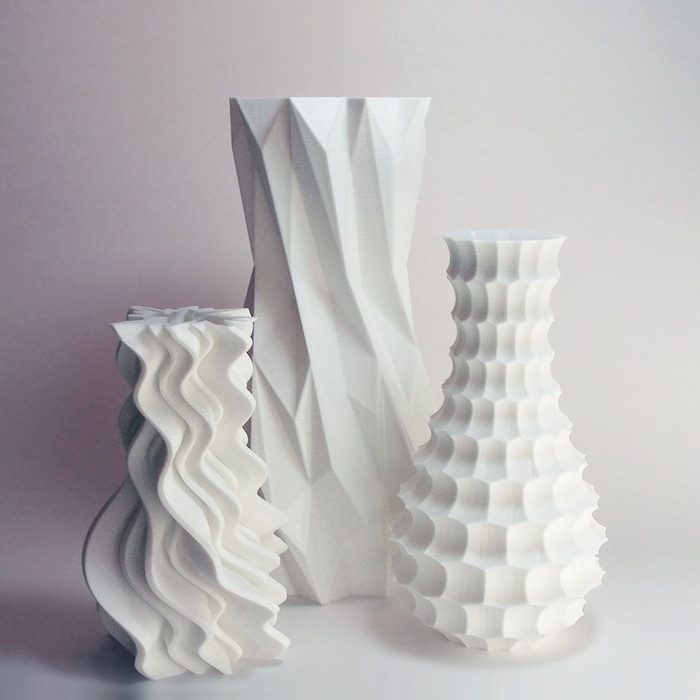 S. Screw Machining Service Suppliers
S. Screw Machining Service Suppliers - Top Sensors Manufacturers and Suppliers in the USA
- Top Graphene Companies and Manufacturers in the USA
- Top Suppliers of Polyvinyl Chloride (PVC)
Top Recliner Mechanism Parts Manufacturers and Suppliers in the USANext Story »
More from Custom Manufacturing & Fabricating
Everything you need to know about 3D printing materials
Here is a guide to help you learn about the materials used in modern industrial and home 3D printing.
When it comes to 3D printing, there is (almost) nothing impossible when it comes to materials, and researchers are constantly creating new ones.
There are certain "master" materials. The most common of these are plastics, ranging from industrial grade plastics like PEEK to very easy-to-handle plastics like PLA. Another common material is polymers, which are used in SLA printers.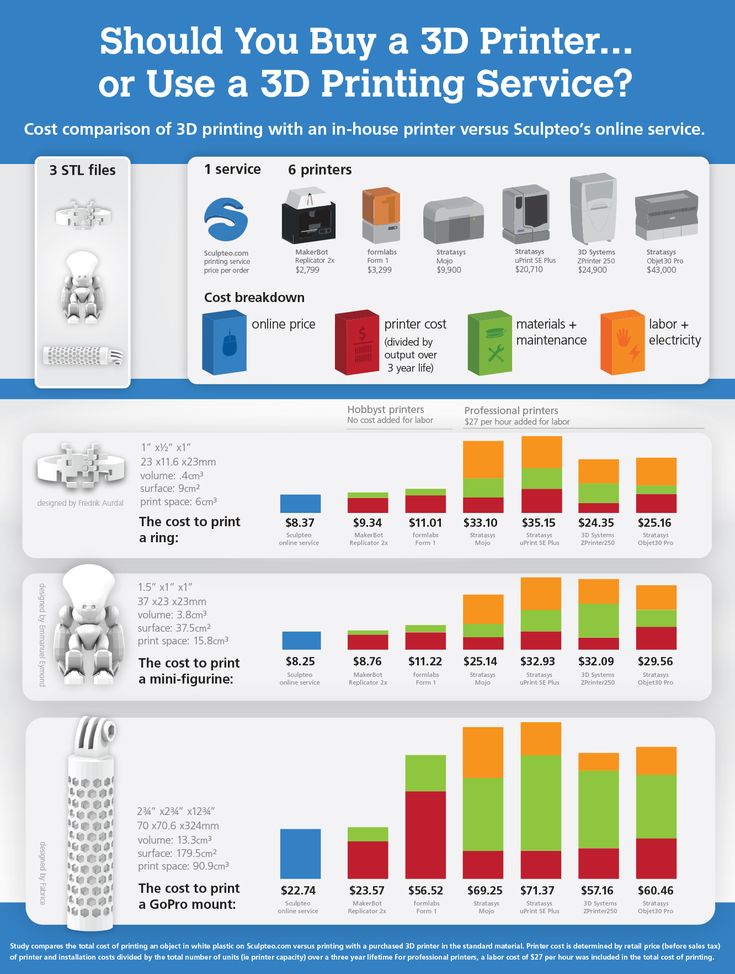 Composites are another category, and, as the name suggests, they are created (as if composed by a composer) by combining several materials, and the best is taken from each. The next large group of materials are metals. They are printed only by industrial machines.
Composites are another category, and, as the name suggests, they are created (as if composed by a composer) by combining several materials, and the best is taken from each. The next large group of materials are metals. They are printed only by industrial machines.
In this guide, we will only consider commercially available 3D printing materials. This means that we have excluded those that cannot be bought in the store, such as biological ones.
So, it's time to start talking about what materials you can work with in 3D printing, about their applications, properties and technologies.
Which material should I choose?
Sorry, but it depends on a lot of circumstances. For example, if you need to print a food container, you will need a 3D printing material that is also food compatible, like PETG. If you want to see in advance and on a smaller scale what will then be made as a result of injection molding, then it is not necessary to immediately use expensive materials when thermoplastics such as nylon are available.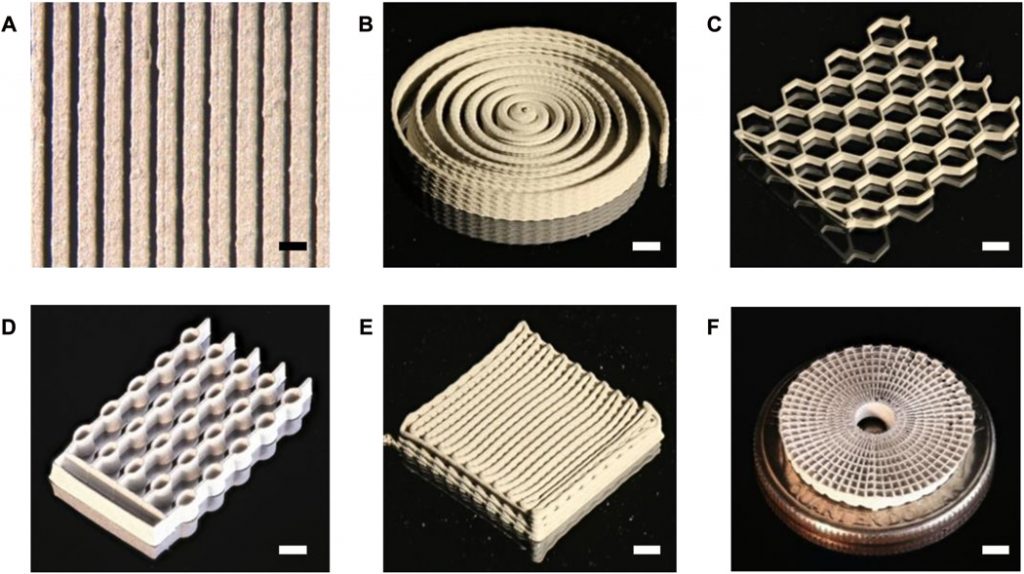
There are also additive technologies such as Binder Jetting (jet printing with a binder) or stereolithography, which greatly expanded the range of materials used in 3D printing. Many jobs that have been the domain of manual craftsmen for centuries are now automated and can be done by anyone with even the slightest understanding of 3D printing 3D modeling. Here you can point to the wide possibilities of producing full-color concepts, architectural models and visualization of art projects from paper (SDL), sandstone (Binder Jetting) and polymers (PolyJet). Thus, it can be said that 3D printing materials have led to a kind of democratization of rapid prototyping of design ideas.
Materials for 3D printing with metals have revealed forms and applications that were previously unimaginable. Nowadays, it is no longer surprising that the aerospace industry is creating complex one-piece structures that use less material than before, and are therefore lighter, resulting in lower fuel consumption for aircraft compared to traditional approaches.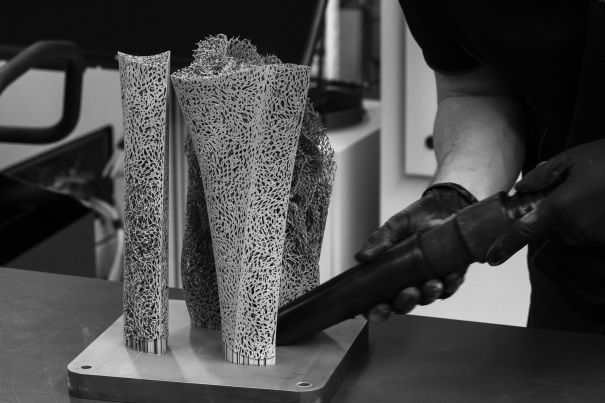
PLASTIC
Most consumer goods today are made from thermoplastics, so this guide to 3D printing materials would be incomplete without them. And if we talk about widespread things, then here the plastics come out in all their glory. Designers and engineers prefer to create functional prototypes from 3D printing materials with the same or very similar properties as injection molding materials, the technology that creates the final product.
Most 3D printing thermoplastics can be handled at home in much the same way as professional solutions. The only thing is that some experts began to stare at laser sintering instead of filament fusing (FFF).
ABS
(Source: Wikipedia)
Do you remember the quality of Lego bricks? And this is ABS plastic, which is one of the most common materials for desktop 3D printing today.
It is completely inexpensive, strong and light. ABS filament comes in a variety of colors. There are some complaints about the smell that ABS emits when heated to its melting point, and if you're worried about that, there are alternatives like PLA.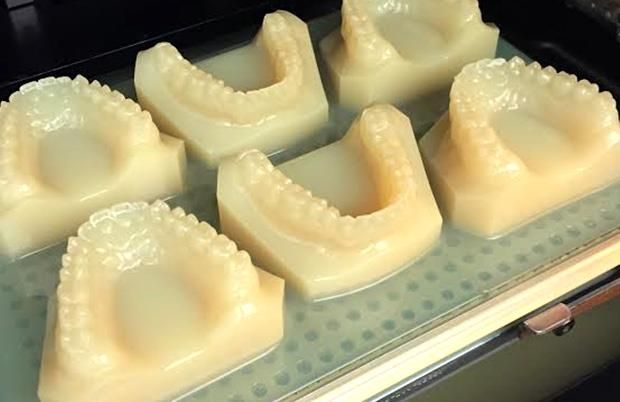 Because ABS is printed at temperatures between +220 and +250 °C, it is recommended to use a heated platform and in a closed working space so that the material cools in a controlled manner and does not warp. Also, 3D printing materials like ABS break down when exposed to atmospheric moisture, so you need to store them in airtight bags or containers.
Because ABS is printed at temperatures between +220 and +250 °C, it is recommended to use a heated platform and in a closed working space so that the material cools in a controlled manner and does not warp. Also, 3D printing materials like ABS break down when exposed to atmospheric moisture, so you need to store them in airtight bags or containers.
Learn more about ABS: Everything you need to know about ABS filament for 3D printing
- Technologies: FDM, resin inkjet, SLA, PolyJetting
- Features: Rugged, lightweight, high resolution, quite flexible
- Applications: architectural models, concepts, assembly models, mass production
PLA
Another crowd favorite in our guide to 3D printing materials is PLA, which is made from cornstarch (although sugar cane and tapioca are also available). This is a simple material that exudes a pleasant sweetish aroma when heated, which is why many people prefer it over ABS. In addition, it can print disposable tableware and does not shrink as much when cooled compared to ABS. However, PLA is not as durable as ABS, and is afraid of heat. Therefore, ABS is better for any working structures.
However, PLA is not as durable as ABS, and is afraid of heat. Therefore, ABS is better for any working structures.
(Source: thingiverse)
Don't Miss: PLA Durability, Biodegradability Experiment
PLA is sold in a variety of colors and is found in many composites that give it the appearance of, for example, wood or metal. Like ABS, PLA filament breaks down when exposed to moisture in the air, so store it in airtight bags or containers.
- Technologies: FDM, SLA, SLS
- Features: easy to print, no toxic smell when printed, food grade
- Applications: concepts, assembly models, functional models, serial production
Nylon (polyamide)
Thanks to its flexibility and strength, nylon has become a leader in a wide range of applications, from engineering to artistic. In some places it is simply called "white plastic". Nylon printouts have a rough surface that can be easily polished. Among FDM filaments, nylon has the strongest layer bonding, making it ideal for 3D printing parts that require high tensile strength and mechanical strength. Like other thermoplastics, nylon decomposes when exposed to ambient moisture and is best stored in airtight containers or bags.
Like other thermoplastics, nylon decomposes when exposed to ambient moisture and is best stored in airtight containers or bags.
- Technologies: FDM, SLS
- Characteristics: strong, smooth surface (after polishing), rather flexible, chemically resistant
- Applications: concepts, functional models, medical applications, instruments, visual arts
PEEK
PEEK is another 3D printing material designed for heavy duty parts. Plastics of this family perfectly tolerate mechanical stresses, temperature fluctuations and chemical influences. And that's not it. PEEK parts can be irradiated with X-rays and gamma rays. And with such reliability, this material is easily processed and produced. But here there is an ambush in the temperature, which in a 3D printer should reach +400 ° C, and it is better to entrust such work to professionals. In addition to high cost, security considerations can also be an argument for abandoning it. PEEK materials with their excellent properties are used in the most demanding applications - automotive, aerospace, chemical and medical industries.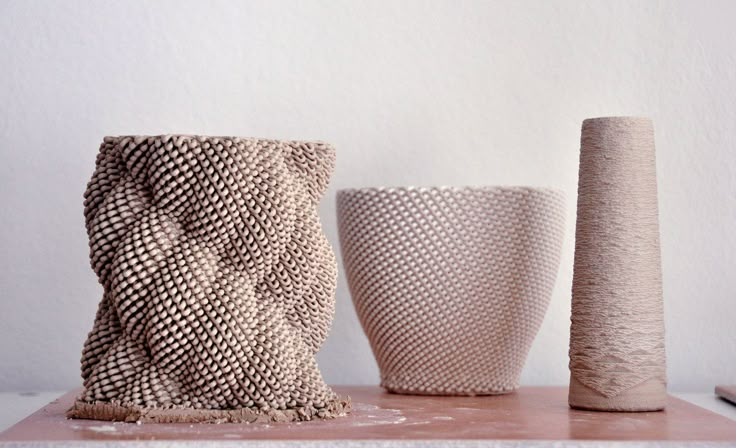 In particular, medical instruments and semiconductor components can be mentioned.
In particular, medical instruments and semiconductor components can be mentioned.
- Technologies: FDM, SLS
- Characteristics: biocompatible, very durable, heat resistant, wear resistant
- Applications: series production (automotive, aerospace, chemical and medical industries)
PET
Our next 3D printing material is PET, the material used to make plastic bottles, another alternative to ABS. Unlike ABS, PET does not stink when melted and is strong and flexible without the stench. More importantly, PET does not require heated print bed. The material gives a shiny surface, it is not hazardous to food, and this in some cases makes it a popular choice. Store PET materials for 3D printing in airtight bags or containers, the material is afraid of moisture.
- Technologies: FDM
- Characteristics: durable, food compatible, flexible, gives a smooth surface
- Applications: assembly models, mass production, functional models
PETG
PETG is a version of PET combined with glycol that has received a number of desirable properties in the 3D printing business, such as high transparency.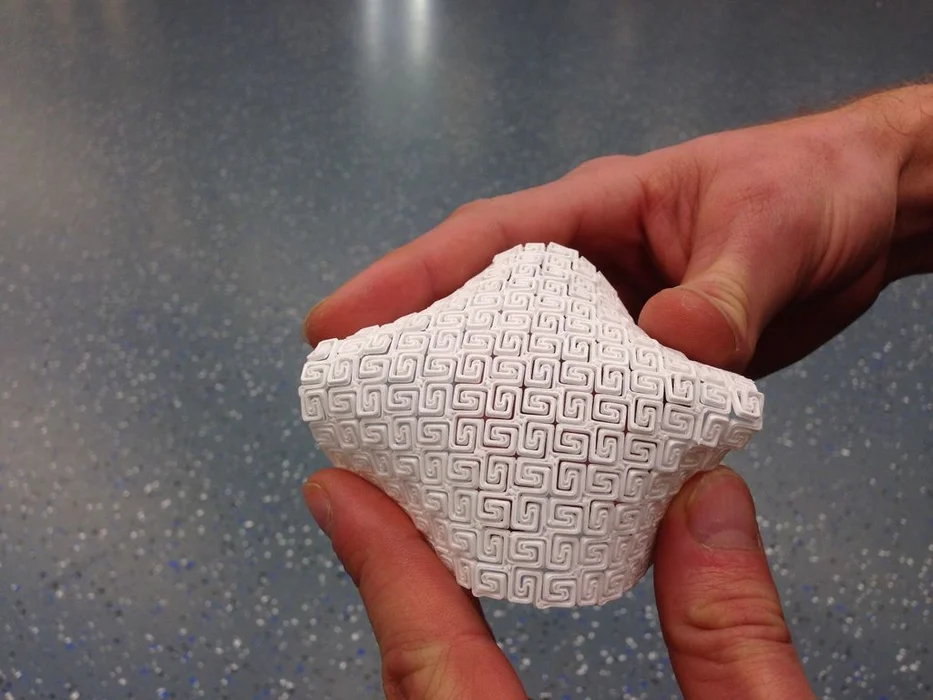 What's more, PETG materials can be printed at lower temperatures and at higher flow rates (up to 100 mm/s), which speeds up production. PETG objects are not afraid of the weather, so they can often be found in gardens. Another commercial quality is food compatibility. Store PETG in airtight bags or containers, the material is afraid of moisture.
What's more, PETG materials can be printed at lower temperatures and at higher flow rates (up to 100 mm/s), which speeds up production. PETG objects are not afraid of the weather, so they can often be found in gardens. Another commercial quality is food compatibility. Store PETG in airtight bags or containers, the material is afraid of moisture.
Don't Miss: All You Need to Know About 3D Printing with PETG Filament
- Technologies: FDM
- Features: Rugged, food grade, all weather, flame retardant
- Applications: concepts, assembly models, functional models, serial production
ULTEM
ULTEM is an amazing 3D printing material often found in demanding applications. On the one hand, the plastics of this family perfectly tolerate mechanical stresses, temperature fluctuations and chemical influences, but at the same time they are easy to process and obtain. The only problem is heat resistance, because the extrusion temperature in a 3D printer must reach +400 ° C, and for safety reasons, it is better not to do this work at home, but to entrust it to specialized 3D printing services. Due to its ruggedness, ULTEM is used in the most demanding applications in the automotive, aerospace, chemical and medical industries. It can be found in electrical circuits, medical instruments, and microchip sockets.
Due to its ruggedness, ULTEM is used in the most demanding applications in the automotive, aerospace, chemical and medical industries. It can be found in electrical circuits, medical instruments, and microchip sockets.
- Technologies: FDM, SLS
- Characteristics: biocompatible, very durable, heat resistant, wear resistant
- Applications: series production (automotive, aerospace, chemical and medical industries)
HIPS
HIPS has two main applications. First of all, it is often used in FDM or SLA printing as a backing material because it dissolves in a substance called limonene. With similar properties, HIPS works best in combination with ABS. But, if you decipher the name of this plastic, and HIPS is High-Impact Polystyrene, i.e. high-impact polystyrene, it becomes clear why it is also widely used for the manufacture of containers and in general where increased impact resistance is important. When printing, HIPS gives off fumes, so the room must be ventilated, especially at home. Like many other materials for 3D printing, this one is also capricious in relation to environmental conditions, so it must be stored tightly.
Like many other materials for 3D printing, this one is also capricious in relation to environmental conditions, so it must be stored tightly.
- Technologies: FDM, SLA
- Characteristics: soluble, soft to the touch
- Applications: assembly models, print stands, shipping containers
PVA
PVA, like HIPS, was designed as a soluble support material, but unlike all other similar materials, it dissolves in plain water. And, like most filaments, it needs to be stored in an airtight container.
- Technologies: FDM
- Characteristics: instant
- Applications: assembly models, printing supports
COMPOSITES
Composites are filaments made up of several materials and using the best qualities of each. PLA, for example, can be paired with everything from wood to metal. Other composites are targeted at specific industries or applications and are used, for example, in engineering applications.
Conductive
A relatively new addition to the filament shelf are 3D printable conductive materials that open up many interesting possibilities. Such materials can be used, for example, in touch panels or in MIDI instruments. Other uses for conductive composites are wearable electronics, computer-to-computer interfaces, Arduino boards, and more for DIY projects. Conductive filaments for 3D printing are usually based on PLA or ABS, each with its pros and cons. Conductive ABS is more durable and heat-resistant than PLA-based, but has the same odor issues as regular ABS.
- Technologies: FDM
- Features: conductive
- Applications: DIY projects
Metal-plastic filament
All "metal" filaments on the market are actually thermoplastics mixed with a small amount of metal. Such 3D printing materials allow you to create objects with the visual properties of these metals. Metal-plastic filaments are heavier than conventional thermoplastics.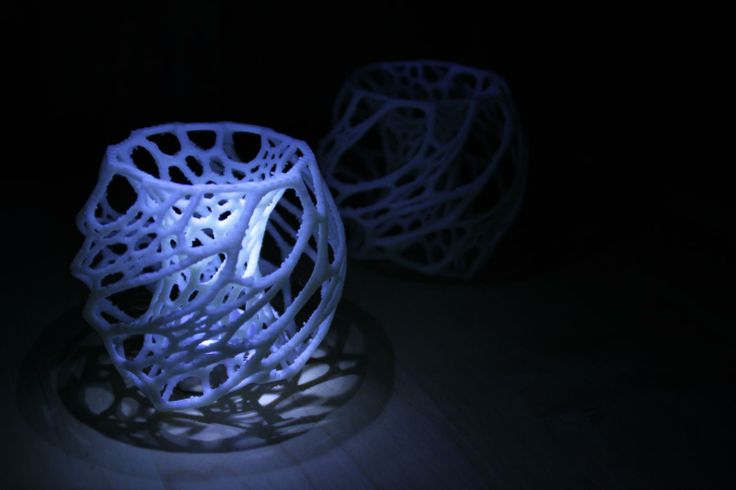 Popular composites for 3D printing are bronze, copper, steel, and iron. Keep in mind that these printouts require post-processing to make them look like metal. Also make sure your printer's nozzle can handle this material.
Popular composites for 3D printing are bronze, copper, steel, and iron. Keep in mind that these printouts require post-processing to make them look like metal. Also make sure your printer's nozzle can handle this material.
- Technologies: FDM
- Features: metal look
- Applications: fine arts
Alumide
This is a nylon variant with aluminum particles. In terms of durability and physical characteristics, it is very similar to nylon. The difference is that it is shiny, wear-resistant and has a porous surface. Objects printed with aluminium can be very precise in size, durable and long lasting. Alumide, like other similar materials for 3D printing, lends itself well to various kinds of post-processing, such as polishing and coating.
- Technologies: SLS
- Features: Rugged, heat resistant, high resolution
- Applications: DIY projects, functional prototypes, mass production
Wood
Human inquisitiveness knows no bounds, so it was only a matter of time before engineers succeeded in adding wood fibers to plastic filament. Wood 3D prints can be processed like real ones, they can be sawn, sanded and painted. And while this kind of exotic 3D printing material is aesthetically pleasing, it doesn't have the same functional characteristics as the original. For example, you will not be able to make a chair out of it.
Wood 3D prints can be processed like real ones, they can be sawn, sanded and painted. And while this kind of exotic 3D printing material is aesthetically pleasing, it doesn't have the same functional characteristics as the original. For example, you will not be able to make a chair out of it.
Interestingly, by changing the extrusion temperature, it is possible to change the shades of brown in the wood filament. 3D printing at a lower temperature produces a very light shade, while at a higher temperature it produces a solid dark brown. Therefore, if you decide to imitate growth rings in a printout, play with temperature. Depending on the brand of wood filament, the printing process may be accompanied by the smell of wood. Some manufacturers offer a wide selection of such material - birch, olive, bamboo, willow ...
- Technologies: FDM
- Characteristics: fragile
- Applications: concept models, fine arts
METALS
Our guide to 3D printing materials would be incomplete without metals.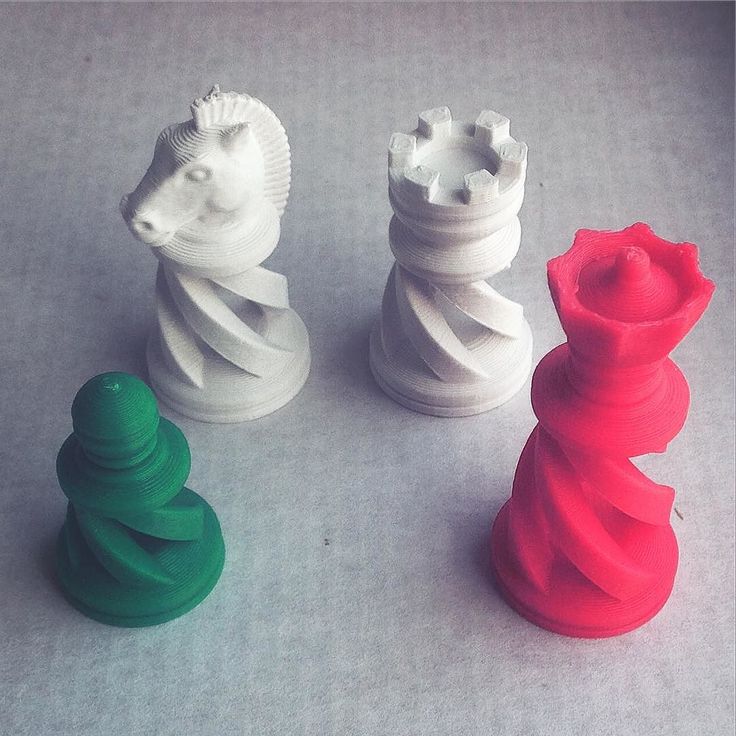 Metal 3D printing has gained particular popularity in the aerospace, automotive and medical industries for its ability to create complex designs that do not require additional welding or machining. The disadvantage of these materials is that they require a lot of experience in development and combination.
Metal 3D printing has gained particular popularity in the aerospace, automotive and medical industries for its ability to create complex designs that do not require additional welding or machining. The disadvantage of these materials is that they require a lot of experience in development and combination.
In addition, they cannot be printed at home because they require high temperatures and large, specialized printers.
Learn more about metal 3D printing in our comprehensive article Everything you need to know about metal 3D printing
Aluminum
wide range of applications. Basically, we are talking about different alloys based on it. Aluminum elements can have thin walls and complex geometries, they tolerate physical stresses and high temperatures well, which is extremely important for low-cost prototypes, functional models, in particular for engines in the automotive and aerospace industries.
- Technologies: direct metal deposition, binder inkjet printing
- Characteristics: light, strong, heat-resistant, not afraid of corrosion
- Applications: functional models, mass production (automotive and aerospace)
Cobalt Chrome
The next material on the list is used for very serious applications.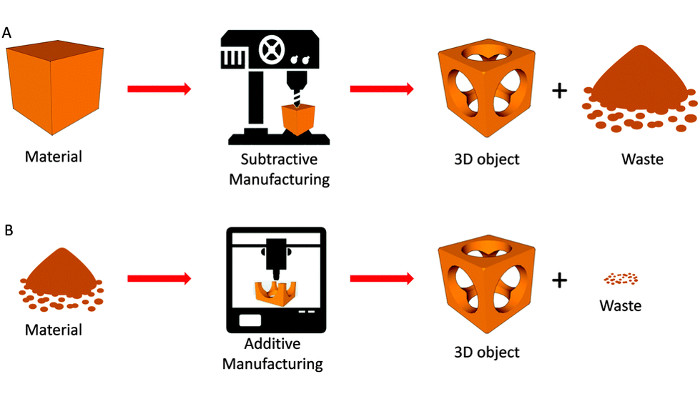 Chrome-cobalt is sometimes referred to as chromium-cobalt-molybdenum or cobalt-chromium, and sometimes simply as a superalloy. Its main use is in medical applications and in the aerospace industry, where it can be found in turbines and jet engines. It has outstanding strength, heat and corrosion resistance and is suitable for fine work.
Chrome-cobalt is sometimes referred to as chromium-cobalt-molybdenum or cobalt-chromium, and sometimes simply as a superalloy. Its main use is in medical applications and in the aerospace industry, where it can be found in turbines and jet engines. It has outstanding strength, heat and corrosion resistance and is suitable for fine work.
- Technologies: direct metal laser sintering, SLM
- Characteristics: biocompatible, durable, corrosion resistant, heat resistant, wear resistant, low electrical conductivity
- Applications: series production (medical and aerospace)
Copper and Bronze
With rare exceptions, copper and bronze are used in investment casting processes and to a lesser extent in formed bed sintering. Due to their electrical conductivity, they are often used in electrical engineering. They are also very popular as art materials and with artisans.
- Technologies: investment casting, formed layer sintering, direct metal deposition
- Characteristics: electrical conductivity, wear resistance
- Applications: series production (electrical engineering), fine arts
Inconel
Inconel is a super alloy designed for the most extreme conditions. It consists mainly of nickel and chromium and is extremely heat resistant. Also resistant to extreme pressures, Inconel is indispensable in the production of aircraft black boxes and even rocket engine parts. Even more often, these features are used in solutions for the oil and chemical industries. The material is very strong and difficult to process, so direct laser sintering is preferred to obtain products of the desired shape.
It consists mainly of nickel and chromium and is extremely heat resistant. Also resistant to extreme pressures, Inconel is indispensable in the production of aircraft black boxes and even rocket engine parts. Even more often, these features are used in solutions for the oil and chemical industries. The material is very strong and difficult to process, so direct laser sintering is preferred to obtain products of the desired shape.
- Technologies: direct metal laser sintering
- Characteristics: heat resistant, wear resistant
- Applications: petroleum, chemical and aerospace industries
Nickel
Nickel alloys are popular for 3D printing applications. Nickel alloy elements are stronger and more durable than traditional methods such as casting. This, in turn, allows engineers to create thinner parts, leading to more fuel-efficient aircraft, for example. There are many types of alloys that combine the characteristics of nickel and other materials such as monel or inconel.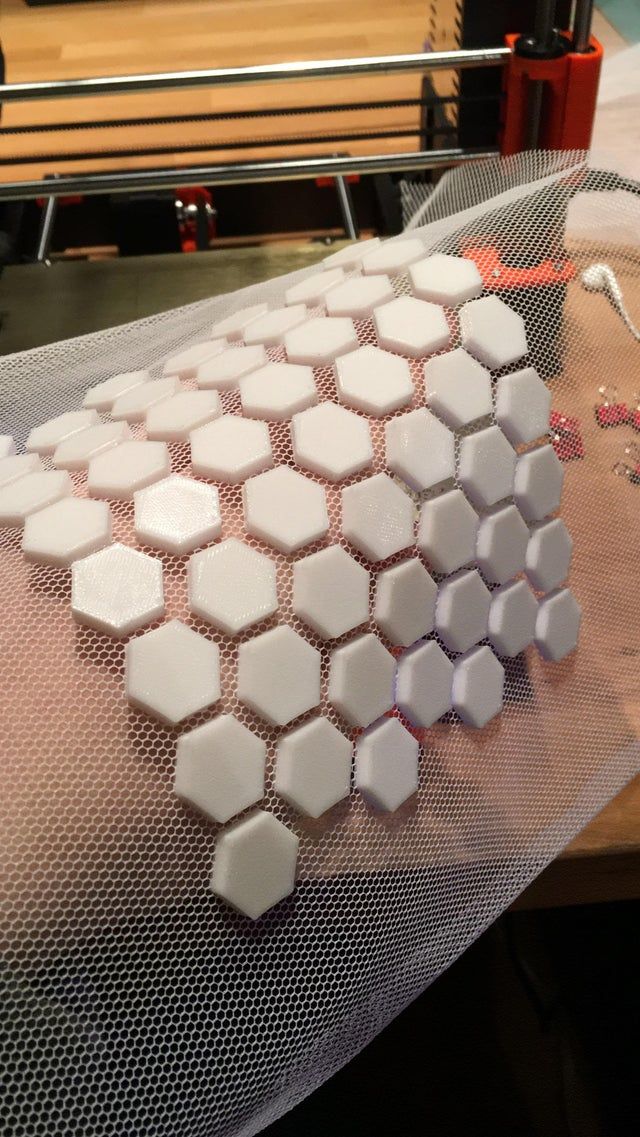
- Technologies: formed bed sintering, direct metal deposition
- Features: strong, lightweight
- Applications: series production (automotive and aerospace)
Precious metals (gold, silver, platinum)
Most formed bed sintering firms can work with precious metals such as gold, silver and platinum. Here, in addition to the aesthetic qualities of materials, it is very important not to lose a single crumb of precious powder. Therefore, such parts are more often produced where a more easily controlled investment casting technology is used. Precious metals are used as materials for 3D printing in jewelry, medical solutions and electronics. Depending on the technology used, some of these materials may be used for casting.
- Technologies: Formed-bed sintering, investment casting, bonded inkjet printing
- Features: high resolution, smooth surface
- Applications: jewelry, dentistry, functional models
Stainless steel
If you're looking for cheaper metal in this guide to 3D printing materials, it's stainless steel.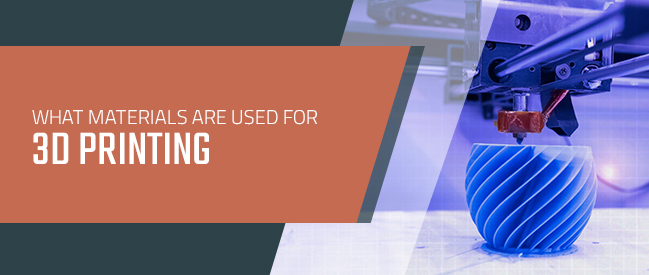 It is also very durable and can be used in many industrial and even artistic applications. Stainless steel alloys containing cobalt or nickel are extremely difficult to break, but have excellent elasticity and good magnetic properties. If you need a different color - please: steel can be coated, for example, with gold. The materials in question are mainly used for industrial purposes.
It is also very durable and can be used in many industrial and even artistic applications. Stainless steel alloys containing cobalt or nickel are extremely difficult to break, but have excellent elasticity and good magnetic properties. If you need a different color - please: steel can be coated, for example, with gold. The materials in question are mainly used for industrial purposes.
- Technologies: direct metal deposition, binder inkjet printing
- Characteristics: high resolution, corrosion resistance, some flexibility, strength
- Applications: tools, function models, mass production
Titanium
Pure titanium powder is often used in 3D printing. This is one of the most versatile materials - it is both durable and lightweight. They work with it using the technology of sintering in the formed layer or inkjet printing with a binder. It is most commonly found in demanding medical solutions, such as custom-made prostheses. Other uses for this material are parts and prototypes for aerospace, automotive and tool manufacturing. In addition to the price, it has another unpleasant feature - its powder explodes easily. Therefore, they print in a vacuum or in argon.
Other uses for this material are parts and prototypes for aerospace, automotive and tool manufacturing. In addition to the price, it has another unpleasant feature - its powder explodes easily. Therefore, they print in a vacuum or in argon.
- Technologies: formed bed sintering, binder inkjet printing, direct metal deposition
- Characteristics: biocompatibility, high resolution, heat resistance, high wear resistance
- Applications: tools, function models, mass production (automotive, aerospace and medical)
CERAMIC
(Source: SONY DSC)
Ceramic is such a popular material for 3D printing in specialized services that custom-made coffee mugs, for example, have become commonplace. And with specialized extruders such as the WASP Clay 2.0, ceramics are also relevant in home 3D printing.
Clay consists of kaolinite and some other minerals, as well as a certain amount of water, which gives it plasticity. After the ceramic piece is printed, it is cured in an oven. The water evaporates and the minerals fuse together, maintaining the object's shape and strength. To make the printout shine, it is covered with glaze and placed in the oven again.
The water evaporates and the minerals fuse together, maintaining the object's shape and strength. To make the printout shine, it is covered with glaze and placed in the oven again.
Ceramics can be printed using conventional FDM technology, as well as complex methods such as SLA. Beginning "potters" are offered a choice: glass, porcelain or carborundum (silicon carbide). The resulting products are distinguished by heat resistance and wear resistance and today most often act as works of art, as well as dishes and dentures.
- Technologies: FDM, binder inkjet, SLA
- Characteristics: heat resistance, wear resistance, brittleness, porous surface
- Applications: fine arts, serial production (dishes, dentistry)
WAX
Wax 3D prints are not usually the final product, but they are an important step in a long journey. They are relevant for very high resolution molding (0.025 mm), as well as for investment casting. They are often used in the creation of custom-made jewelry, and at a relatively low price. Another industry that uses this kind of 3D printing materials is dentistry. When creating complex structures, wax, due to its low melting point, is an excellent material for props.
Another industry that uses this kind of 3D printing materials is dentistry. When creating complex structures, wax, due to its low melting point, is an excellent material for props.
- Technologies: SLA, PolyJet
- Features: high resolution, smooth surface
- Applications: series production (jewelry, dentistry)
PAPER
With selective deposition lamination (SDL) technology, good old stationery around the corner finds its niche in 3D printing. SDL objects are tree-like, full-color, and this makes them popular in architectural and other conceptual models. On the other hand, parts made from SDL are not as strong as those made from other materials and do not have the level of detail that those made from PolyJet plastic or plaster.
- Technologies: Selective Deposition Lamination
- Features: Cost effective, Recyclable, Full color
- Applications: concept models, fine arts
SANDSTONE
Sandstone as a printing material is sometimes referred to as gypsum (in fact, gypsum is a component of natural sandstone) and is used to create impressive full-color objects in one process. To enhance the color and add strength, the printouts are covered with a protective layer of epoxy, without this the moisture will do its job and the sandstone will discolour. Objects turn out to be fragile, like porcelain, and this must be taken into account at the design stage. Bearing in mind the capriciousness of sandstone, it is mainly used in architectural models, concept prototypes and art projects.
To enhance the color and add strength, the printouts are covered with a protective layer of epoxy, without this the moisture will do its job and the sandstone will discolour. Objects turn out to be fragile, like porcelain, and this must be taken into account at the design stage. Bearing in mind the capriciousness of sandstone, it is mainly used in architectural models, concept prototypes and art projects.
- Technologies: FDM, binder inkjet, formed bed sintering
- Features: fragile, full color
- Applications: concept models, fine arts
(PHOTO)POLYMERS
(Photo: Nervous System)
Photopolymers are a type of liquid resin that hardens when exposed to ultraviolet (UV) electromagnetic radiation or visible light. Today, they work mainly on two technologies - SLA (stereolithography) and PolyJet. SLA uses a UV laser to project a slice of an object onto the surface of a photopolymer poured into a bath, which solidifies into the shape of the object's layer. This is repeated for all layers.
PolyJet technology takes a different approach. The printer directs a jet of resin onto a substrate, on which the resin is continuously cured by a UV lamp. SLA prints layers no thinner than 0.1 mm, and PolyJet produces up to 16 microns. And although the methods are similar and they use similar materials, the big difference lies in the methods of working with materials.
All photopolymers are sensitive to sunlight.
SLA Resins
Many SLA Resins are designed to mimic the different properties of the "traditional" materials discussed above. For example, there are materials that are compatible with wax, they are used to create impressions in investment casting. And if biocompatibility is important, then there are thermoplastics for SLA, which are very similar to PLA. Other SLA plastics can be as strong as ABS. There are even composite materials for SLA printing that have the properties of ceramics: the objects obtained on the printer can be put in an oven and then treated like ceramic.
Resins are an excellent choice for functional and conceptual models. They are especially good if you want to get a large object in a short time, while with a high level of detail. Some polymers even become hard enough for machining after quenching. In addition, high-temperature polymers are a cost-effective replacement for mold materials for low-volume moldings.
The popularity of the SLA process lies in its excellent speed and accuracy. The downside is that polymers are still significantly more expensive than everything that was mentioned here.
SLA printers are sold, you can work with them both at home and in a small office and use very interesting materials for semi-professional 3D printing.
- Technologies: SLA
- Characteristics: smooth surface, some flexibility
- Applications: concept models, functional models, fine arts, tools (prototypes)
PolyJet resins
(Source: Printshow)
Like SLA resins, PolyJet materials mimic the different properties of "traditional" 3D printing materials. Most PolyJet resins have fairly descriptive names. For example, rigur is designed for strength and sounds similar to the Latin root for hardness. It is also called "simulated propylene" for the similarity of the surface and functionality. A number of 3D printing materials are referred to as "digital ABS" because they are heat resistant and durable. Rubber-like materials are designed for non-slip surfaces and to absorb vibrations. Since there are so many PolyJet polymers, we decided to refrain from a detailed description of each of them.
It should be noted, however, that PolyJet polymers differ from SLA in that they allow obtaining the so-called. digital materials. These are mixtures of up to three 3D printing materials to obtain specific properties (strength, heat resistance, transparency, etc.) for a specific part and in a specific color range. This is a bright path to radiant prospects. While other materials described in this review allow you to create only a visual imitation of "traditional" objects, objects from PolyJet can also imitate tactile sensations, actually replacing reality.
PolyJet Resins are an excellent choice for color prototypes of consumer products to test these products with different target audiences. Depending on the chosen material and the final goal, functional models can also be created to evaluate the original. In addition, PolyJet resins are the only 3D printing materials that can simulate multilayer casting. Some PolyJet resins are suitable for actual molding, others are used in high precision parts and have excellent performance for visual prototypes, models and simulations.
- Technology: PolyJet
- Features: high resolution, smooth surface, flexibility, temperature resistance, transparency
- Applications: concept models, fine arts, jewelry, medical production, instruments (prototypes)
Source: 2019 3D Printing Materials Guide – All You Need to Know
3D Printing Materials / Articles
Share:
Source
FFF technology has many advantages, including the relative simplicity of the design of printers and the affordability of both devices and consumables. Moreover, the range of materials is perhaps the widest among all available technologies. As a rule, thermoplastics are used for printing, but there are exceptions - composite materials containing various additives, but based, again, on thermoplastics. In this section, we will try to talk about the most widely used materials in more detail, starting with the most popular types.
Polylactide (PLA)
Polylactide is one of the most widely used thermoplastics due to several factors. Let's start with the fact that PLA is known for its environmental friendliness. This material is a lactic acid polymer, which makes PLA a completely biodegradable material. The raw materials for the production of polylactide are corn and sugar cane. At the same time, the environmental friendliness of polylactide causes its fragility. Plastic easily absorbs water and is relatively soft. As a rule, PLA models are not intended for functional use, but serve as designer models, souvenirs and toys. Few practical industrial applications include the production of food packaging, drug containers and surgical sutures, as well as use in bearings that do not carry high mechanical loads (for example, in modeling), which is possible due to the material's excellent slip coefficient.
One of the most important factors for 3D printing applications is the low melting temperature of only 170-180°C, which contributes to relatively low power consumption and the use of inexpensive brass and aluminum nozzles. As a rule, extrusion is carried out at 160-170°C. At the same time, PLA solidifies quite slowly (glass transition temperature is about 50°C), which should be taken into account when choosing a 3D printer. The best option is a device with an open case, a heated work platform (to avoid deformation of large models) and, preferably, additional fans to cool the fresh layers of the model.
PLA has low shrinkage, i.e. loss of volume on cooling, which helps to prevent warping. However, shrinkage has a cumulative effect as the dimensions of printed models increase. In the latter case, the build platform may need to be heated to evenly cool the printed objects.
The cost of PLA is relatively low, which adds to the popularity of this material.
Acrylonitrile butadiene styrene (ABS)
ABS plastic is perhaps the most popular thermoplastic used in 3D printing, but not the most common. This contradiction is explained by certain technical difficulties that arise when printing ABS. The desire of craftsmen to use ABS is determined by the excellent mechanical properties, durability and low cost of this material. In industry, ABS plastic is already widely used: the production of car parts, cases of various devices, containers, souvenirs, various household accessories, etc.
ABS plastic is resistant to moisture, acids and oil, has a fairly high temperature resistance - from 90°C to 110°C. Unfortunately, some types of material are destroyed by direct sunlight, which somewhat limits the application. At the same time, ABS plastic is easy to paint, which allows you to apply protective coatings on non-mechanical elements.
Despite a relatively high glass transition temperature of around 100°C, ABS has a relatively low melting point. Actually, due to the amorphous nature of the material, ABS does not have a melting point, as such, but 180 ° C is considered an acceptable temperature for extrusion, which is on the same level as the above-described PLA. The lower temperature spread between extrusion and glass transition allows ABS to cure faster than PLA.
The main disadvantage of ABS plastic can be considered a high degree of shrinkage during cooling - the material can lose up to 0.8% of its volume. This effect can lead to significant deformations of the model, twisting of the first layers and cracking. To combat these unpleasant phenomena, two main solutions are used. First, heated work platforms are used to help reduce the temperature gradient between the lower and upper layers of the model. Secondly, ABS 3D printers often use closed housings and control of the background temperature of the working chamber. This makes it possible to maintain the temperature of the applied layers at a level just below the glass transition threshold, reducing the degree of shrinkage. Full cooling is carried out after receiving the finished model.
The relatively low stickiness of ABS may require additional bonding aids such as adhesive tape, polyimide film, or applying an acetone solution of the ABS to the platform just prior to printing. For more information on how to avoid warping, see How to Avoid Warping 3D Printed Models.
While ABS is not a health hazard at room temperature, heated plastics release acrylonitrile fumes, a poisonous compound that can irritate mucous membranes and cause poisoning. Although the amount of Acrylonitrate produced in small scale printing is negligible, it is recommended that you print in a well ventilated area or use an exhaust hood. It is not recommended to use ABS plastic for the production of food containers and utensils (especially for storing hot food or alcoholic beverages) or toys for small children.
The good solubility of ABS in acetone is very useful, as it allows large models to be produced piece by piece and then glued together, greatly expanding the capabilities of inexpensive desktop printers.
Polyvinyl alcohol (PVA)
Polyvinyl alcohol is a material with unique properties and special applications. The main feature of PVA is its water solubility. 3D printers equipped with dual extruders have the ability to print models with PVA support structures. Upon completion of printing, the supports can be dissolved in water, leaving a finished model that does not require mechanical or chemical roughening. Similarly, PVA can be used to create water-soluble master patterns for molds and molds themselves.
The mechanical properties of PVA are quite interesting. At low humidity, plastic has high tensile strength. With increasing humidity, strength decreases, but elasticity increases. The extrusion temperature is 160-175°C, which allows the use of PVA in printers designed for printing with ABS and PLA plastics.
Since the material easily absorbs moisture, it is recommended to store PVA plastic in dry packaging and, if necessary, dry before use. Drying can be done in a pottery kiln or an ordinary oven. As a rule, drying of standard coils takes 6-8 hours at a temperature of 60-80°C. Exceeding 220°C will cause the plastic to decompose, which should be taken into account when printing.
Nylon
Nylon is attractive due to its high wear resistance and low coefficient of friction. Thus, nylon is often used to coat friction parts, which improves their performance and often allows them to function without lubrication. Following the widespread use of nylon in industry, additive manufacturing has also become interested in the material. Attempts to print with nylon have been made almost since the early days of FDM/FFF technology.
In reality, there are several types of nylon produced by different methods and with slightly different characteristics. The most famous is nylon-66, created by the American company DuPont in 1935. The second most popular option is nylon-6, developed by BASF to circumvent the DuPont patent. These two options are very similar. In terms of 3D printing, the main difference is the melting point: Nylon-6 melts at 220°C, while Nylon-66 melts at 265°C.
Many hobbyists prefer to use commercially available nylon threads such as trimmer wire. The diameter of such materials often corresponds to the diameter of standard FFF materials, which makes their use tempting. At the same time, these products are usually not pure nylon. In the case of trimmer rods, the material consists of nylon and fiberglass for an optimal combination of flexibility and rigidity.
Fiberglass has a high melting point and therefore printing with these materials is prone to high nozzle wear and plugging.
Recently there have been attempts to commercially develop nylon-based printing materials specifically for FDM/FFF applications, including Nylon-PA6 and Taulman 680. These grades are extrudable at 230-260°C.
Since nylon readily absorbs moisture, consumables should be stored vacuum-packed or at least in a container with water-absorbent materials. A sign of excessively damp media will be steam escaping from the nozzle during printing, which is not dangerous, but may degrade the quality of the model.
When printing with nylon, it is not recommended to use a polyimide desktop coating as the two materials fuse together. As a coating, you can use adhesive tape with wax impregnation (masking tape). The use of a heated bed will help reduce the possibility of deformation of the model, similar to printing with ABS plastic. Due to the low coefficient of friction of nylon, extruders with studded feeders should be used.
The nylon layers have excellent adhesion, minimizing the chance of delamination.
Nylon is difficult to bond, making it difficult to print large multi-piece models. Alternatively, fusion of parts is possible.
Because nylon can release toxic fumes when heated, we recommend that you print in a well-ventilated area or use an exhaust fan.
Polycarbonate (PC)
Polycarbonates are attractive due to their high strength and toughness, as well as resistance to high and low temperatures.
The potential health risk of printing is worth noting: the toxic and potentially carcinogenic compound bisphenol A is often used as a raw material. .
The extrusion temperature depends on the printing speed to avoid cracking, but the minimum temperature at 30mm/s can be considered as 265°C. When printing, the use of polyimide film is recommended for better adhesion to the desktop surface. The high susceptibility of polycarbonate to deformation requires the use of a heated platform and, if possible, a closed housing with heating of the working chamber.
Polycarbonate is highly hygroscopic (easily absorbs moisture), which requires storage in dry conditions to avoid the formation of bubbles in the applied layers. For extended printing in humid climates, even the print spool may need to be stored in a moisture-proof container.
High density polyethylene (HDPE)
Arguably the most common plastic in the world, polyethylene is relatively rare among 3D printed materials. The reason for this is the difficulty in layer-by-layer manufacturing of models.
Polyethylene melts easily (130-145°C) and hardens quickly (100-120°C), as a result of which the applied layers often do not have time to set. In addition, polyethylene is characterized by high shrinkage, which provokes the twisting of the first layers and the deformation of the models as a whole during uneven solidification. Printing with polyethylene requires the use of a heated platform and a working chamber with accurate temperature control to slow down the cooling of the applied layers. In addition, you will need to print at high speed.
Difficulties in use are more than offset by the cheapness and availability of this material. Recently, several devices have been developed for processing plastic waste from HDPE (bottles, food packaging, etc. ) into standard filaments for printing on FDM/FFF printers. Examples are FilaBot and RecycleBot. Due to the simplicity of design, RecycleBot devices are often assembled by 3D craftsmen.
Melting polyethylene releases vapors of harmful substances, so it is recommended to print in well ventilated areas.
Polypropylene (PP, PP)
Polypropylene is a widely used plastic used in the production of packaging materials, dishes, syringes, pipes, etc. The material has a low specific gravity, is non-toxic, has good chemical resistance, is resistant to moisture and wear, and is quite cheap. Among the disadvantages of polypropylene, one can note the vulnerability to temperatures below -5 ° C and to direct sunlight.
The main difficulty in printing with polypropylene is the high shrinkage of the material during cooling - up to 2.4%. For comparison, the shrinkage of the popular but already problematic ABS plastic reaches 0.8%. Although polypropylene adheres well to cold surfaces, it is recommended to print on a heated platform to avoid deformation of models. The minimum recommended extrusion temperature is 220°C.
Polypropylene printing filaments are sold by Orbi-Tech, German RepRap, Qingdao TSD Plastic. Stratasys has developed a polypropylene simulant optimized for 3D printing called Endur.
Polycaprolactone (PCL)
Polycaprolactone (aka Hand Moldable Plastic, Mold-Your-Own Grips, InstaMorph, Shapelock, Friendly Plastic, Polymorph, Polymorphus, Ecoformax) is a biodegradable polyester with an extremely low melting point of about 60°C. In practice, this property creates certain problems in 3D printing, since not all 3D printers can be configured to work at such low temperatures. Heating polycaprolactone to the usual extrusion temperatures (about 200°C) causes a loss of mechanical properties and may lead to breakage of the extruder.
Polycaprolactone is non-toxic, making it suitable for use in the medical industry, and biodegradable. When ingested, polycaprolactone breaks down, which makes printing with this material safe. Due to the low melting point, there is no danger of burns when touching fresh models. The high plasticity of the material makes it possible to reuse.
Polycaprolactone is not suitable for creating functional mechanical models due to its viscosity (glass transition temperature is -60°C) and low heat resistance (melting point is 60°C). On the other hand, this material is perfect for the production of mock-ups and food containers.
The material sticks easily to the surface of even a cold working table and is easy to paint.
Polyphenylsulfone (PPSU)
Polyphenylsulfone is a high-strength thermoplastic widely used in the aviation industry. The material has excellent chemical and thermal stability and practically does not burn. Polyphenylsulfone is biologically inert, which makes it possible to use this material for the production of tableware and food containers. Operating temperature range is -50°С - 180°С. Plastic is resistant to solvents and fuels and lubricants.
For all its merits, polyphenylsulfone is rarely used in 3D printing due to its high melting point, reaching 370°C. Such extrusion temperatures are beyond the power of most desktop printers, although printing is theoretically possible using ceramic nozzles. Currently, the only active user of the material is Stratasys, which offers industrial Fortus installations.
Polymethyl methacrylate (Acrylic, plexiglass, acrylic, PMMA)
Polymethyl methacrylate is a well-known organic glass. The material is durable, moisture resistant, environmentally friendly, easy to glue, plastic enough and resistant to direct sunlight.
Unfortunately, acrylic is not suitable for FDM/FFF printing for a number of reasons. Acrylic is poorly stored in the form of spools of thread, as constant mechanical stress leads to the gradual destruction of the material. To avoid bubbles, the print resolution must be high, with a precision almost impossible for home printers. Acrylic's rapid curing requires strict environmental control of the working chamber and high print speeds. Again, the print speeds of FDM/FFF printers are inversely related to print resolution, which exacerbates the problem.
However, attempts are being made to print with acrylics, and some of them are producing relatively positive results. However, when creating sufficiently strong models, it is not yet possible to avoid the formation of bubbles and achieve the usual transparency of the material. At the moment, the best results with acrylic are shown by another printing technology - multi-jet modeling (MJM) from 3D Systems. In this case, a photopolymer version of acrylic is used. Stratasys has also made significant progress using its own photopolymer acrylic simulant VeroClear on Objet Eden printers. It is hoped that the high demand for acrylic will lead to the emergence of composite materials based on polymethyl methacrylate, designed specifically for FDM/FFF printing.
Polyethylene terephthalate (PET, PET)
Polyethylene terephthalate - this complex name hides a material used for the production of plastic bottles and other food and medical containers.
The material has a high chemical resistance to acids, alkalis and organic solvents. The physical properties of PET are also impressive with high wear resistance and tolerance to a wide temperature range from -40°C to 75°C. Among other things, the material is easily machined.
Printing with PET is somewhat problematic due to the relatively high melting point of up to 260°C and significant cooling shrinkage of up to 2%. Using PET as a consumable requires approximately the same conditions as printing with ABS.
Achieving transparency of models requires rapid cooling to pass the glass transition threshold of 70°C - 80°C.
The material has become the focus of 3D craftsmen using used containers as raw materials for the home production of 3D printing consumables. Recycling devices such as FilaBot or RecycleBot are used to make threads.
High impact polystyrene (HIPS)
High impact polystyrene is widely used in industry for various household products, building materials, disposable tableware, toys, medical instruments, etc.
When 3D printed, polystyrene shows physical properties very similar to the popular ABS -plastic, which makes this material more and more popular among 3D craftsmen. The most attractive feature of polystyrene is the difference from ABS in terms of chemical properties: polystyrene is quite easily amenable to the organic solvent Limonen. Since Limonene has no effect on ABS plastic, it is possible to use polystyrene as a material for building soluble support structures, which is extremely useful when building complex, interlaced models with internal supports. Compared to the convenient, water-soluble polyvinyl alcohol (PVA) plastic, polystyrene compares favorably with relatively low cost and resistance to humid climates that make PVA difficult to work with.
Be aware that some ABS manufacturers mix slightly cheaper polystyrene into their consumables. Accordingly, models made from such materials can be dissolved in Limonene along with supporting structures.
When polystyrene is heated to extrusion temperature, toxic fumes can be released, so printing in a well-ventilated area is recommended.
Wood simulants (LAYWOO-D3, BambooFill)
LAYWOO-D3 is a recent development designed to print wood-like models. The material consists of 40% natural wood chips of microscopic size and 60% binder polymer. The LAYWOO-D3 is very easy to handle, being virtually warp-free and does not require the use of a heated platform. According to the manufacturers, the polymer is non-toxic and completely safe.
The unique properties of the material allow for different visual results when printing with different nozzle temperatures. The operating temperature range is 180°C-250°C. As the extrusion temperature increases, the shade of the material becomes progressively darker, allowing it to simulate different types of wood or annual rings.
Finished models are excellent for mechanical processing - grinding, drilling, etc. In addition, the products are easily painted, and unpainted models even have a characteristic woody smell.
Unfortunately, the cost of the material is almost four times higher than the price of popular materials such as PLA and ABS plastics. As popularity is projected to grow, the material should become more accessible.
Alternative materials are currently being developed and tested, such as BambooFill from the Dutch company ColorFabb.
Sandstone simulants (Laybrick)
Composite material from inventor Kai Parti, responsible for the revolutionary wood simulant LAYWOO-D3. This time, Kai set his sights on sandstone imitation, using a tried and tested method of mixing a binder with a filler, in this case mineral.
Laybrick allows you to produce objects with different surface textures. At low extrusion temperatures of the order of 165°C-190°C, the finished products have a smooth surface. Increasing the printing temperature makes the material rougher, up to a high degree of resemblance to natural sandstone at extrusion temperatures above 210°C.
The material is easy to work with no need to heat the work platform, does not show significant deformation when shrinking and does not produce toxic fumes when heated. The only drawback can be considered a rather high cost of the material, which is largely due to limited production.
Metal Simulators (BronzeFill)
Metals have attracted additive manufacturing enthusiasts since the early days of 3D printing technology. Unfortunately, printing with pure metals and alloys causes a lot of difficulties that are insurmountable for most 3D printing methods. Fully functional metal products can only be produced using technologies such as SLS, DLMS or EBM, which require the use of industrial plants that cost hundreds of thousands of dollars. At the same time, metal imitators are successfully used in 3D inkjet printing (3DP), where products are formed from metal powders, the particles of which are held together by an applied binder material. In FDM/FFF printing, metal simulants are just emerging.
An interesting example is BronzeFill, which is actually a transparent PLA plastic filled with bronze microparticles. The material, currently in beta testing, must prove suitability for use in any printer designed to work with polylactide.







